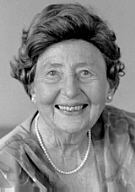Nationality Australian Music director Paper Run Died May 21, 2000 | Role Composer Name Dulcie Holland | |
 | ||
Occupation Composer, teacher, performer Books Musicianship: For Students Preparing for the Australian Musical Examinations Similar People Eggner Trio, Frank Hutchens, Alfred Hill, Colin Brumby, Eric Gross | ||
Dulcie holland 1913 2000 tuba tune haverhill
Dulcie Sybil Holland AM (5 January 1913 – 21 May 2000) was an Australian composer and music educator. Best known for her contributions to music education through her energetic involvement with the Australian Music Examinations Board, Holland has in recent decades gained greater recognition as a composer. She is now regarded by some critics as one of the more significant Australian composers of her generation.
Contents
- Dulcie holland 1913 2000 tuba tune haverhill
- Tuba tune dulcie holland formentelli rieti
- Education
- Career
- Music
- Style
- Major works
- Awards
- References
Tuba tune dulcie holland formentelli rieti
Education
Dulcie Holland was born in Sydney in 1913. She began taking piano lessons at the age of six, and attended Shirley School for Girls, known for its academic excellence. In 1929 she entered the New South Wales Conservatorium of Music (now the Sydney Conservatorium) to continue her studies. At the Conservatorium she studied piano with Grace Middenway and Frank Hutchens, cello with Gladstone Bell, and composition with Roy Agnew and Alfred Hill, eventually completing both the Diploma course (DSCM) and the Licentiate of the Royal Schools of Music (LRSM) in 1933.
In 1936, Holland travelled to London to study composition at the Royal College of Music with John Ireland. At the end of her first year, she won the Blumenthal Scholarship for composition, which entitled her to another three years of study at the College. The following year she won the Cobbett Prize for chamber music, but with the outbreak of World War II in 1939, decided to return to Australia.
Several years after the war, in 1951, she returned to the United Kingdom for a year to study serialism with Mátyás Seiber.
Career
After returning to Australia from the Royal College in 1939, Holland embarked on a career as a recitalist and freelance composer. In 1940 she married the Australian conductor Alan Bellhouse, with whom she would have two children. During the 1940s, in addition to her childrearing and composing, she wrote a number of children's books, under her married name of Dulcie Bellhouse. She also began to write music for the North Shore Symphony Orchestra (founded and conducted by her husband), an association that would continue for 25 years.
In the 1950s, Holland was commissioned to write musical scores for the Department of the Interior, which was then producing a number of documentary films about Australian life for the new wave of migrants entering the country. She eventually wrote the scores for forty of these films.
In 1967, Holland joined the Australian Music Examinations Board (AMEB) as an examiner. During her long association with the Board, her prolific output of musical studies and pieces for students at all levels of development, along with her authorship of numerous music theory books, were eventually to make her a familiar name in thousands of Australian households. Sales of her didactic writings made her Australia's most celebrated music author.
After her retirement from AMEB in 1983, Holland continued to compose, but chose to focus more on the writing of music text books, on the ground that she believed "making new converts to music" to be more important than adding to the volume of existing music.
In 1977, she was made a Member of the Order of Australia (AM). In 1993, along with Miriam Hyde, she was awarded an honorary Doctorate of Letters (D.Litt.) by Macquarie University.
Music
Throughout the course of her seventy-year career, Holland produced a considerable body of serious (as opposed to educational) music. Her work includes orchestral pieces (including a symphony), vocal and choral works, a large output of chamber music featuring different combinations of instruments, and many pieces for piano and other solo performance. She wrote in both the contemporary and neo-classical genres.
Style
Dulcie Holland has been described as "less conservative and more appealing than many of her contemporaries". Her music is generally "melodic, optimistic and sunny", and even her darker moods are "reflective and lyrical". She employs "non-traditional key relationships and swiftly changing tonal centres", and is "fond of the pentatonic scale with its built-in ambiguities, and the possibilities thus given to modulate to unexpected keys". Overall however, her music is said to convey a "sense of balance, of confidence, of individuality [and] of formal structure".
Major works
In addition to the symphony and string quartet, Holland's Piano Sonata has been called "undoubtedly a landmark work in the Australian oeuvre", while her 1944 Trio for Violin, Cello and Piano has been described as "one of the greatest treasures of Australian music". Reflecting Holland's difficulty in gaining recognition as a serious composer through much of her lifetime, the latter work did not receive its first public performance until 1991, 47 years after it was first written.
